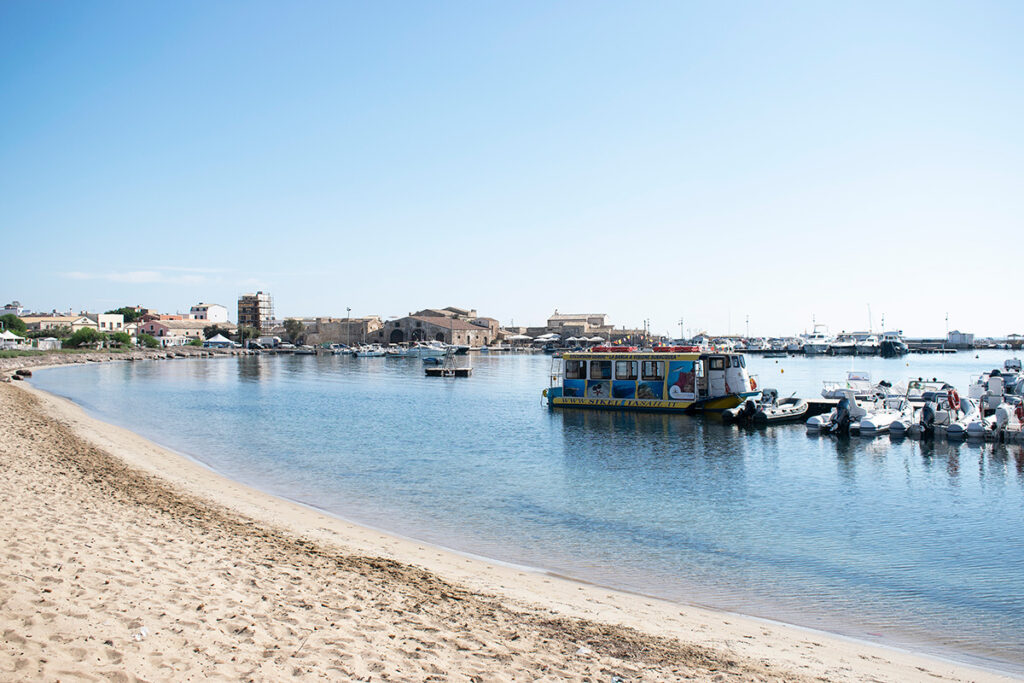An ancient fishing village built around the tuna fishery becomes an exceptional tourist destination between the sea, typical products and lots of color…
In the extreme south-east of Sicily there is a delightful fishing village, with ancient yellow stone houses, which fascinates with its natural beauty and its maritime culture. This is Marzamemi, a small hamlet of Pachino, in the province of Syracuse, known since ancient times for its tuna fishery and which has now become a destination for thousands of tourists attracted by the transparent sea, the golden beaches and the characteristic restaurants, with their chairs and blue tables, which give the small village a picturesque appearance and bring to mind the most famous Greek islands.
Even the two small natural ports, the ancient Balata and the more commercial Fossa, contribute to creating breathtaking views that are impossible not to fall in love with, thanks also to the presence of flowers that color every corner of the seaside village. The result is a suggestive picture, which has often been chosen as a set for the filming of films and television series including Sud by Gabriele Salvatores, starring Silvio Orlando, Francesca Neri and Claudio Bisio, to some scenes from the series Il commissario Montalbano and Immaturi.
Marzamemi also managed to make it to the night of the Oscars with the film L’uomo delle stelle by director Giuseppe Tornatore, nominated for Best Foreign Film in 1996. Numerous TV commercials and video clips were also filmed in Marzamemi, and the small village was chosen in 2022 by Dolce & Gabbana stylists for the fashion show of the summer men’s collection, whose theme was linked to the legend of Calafarina and in which the models wore clothing that recalled the Arab style. An evening which saw, between the fashion show and the following party, the participation of big stars including the famous actress, Sharon Stone.
Marzamemi – for some from the Arabic marsà al hamama or marsà al hamen, i.e. “bay of turtle doves”, for others from marza (port) and memi (small) therefore “small port” – has fishing in its soul. Its tuna fishery, one of the oldest and most important in Sicily, was set up by the Arabs around the year 1000. In 1600 it was sold by the Spaniards to the Prince of Villadorata and it is to this period that the construction of the splendid village around it, as we see it today, can be traced back.

Until the 1950s, the tuna fishery represented a very important activity for the place, today it has become above all a destination for tourists. Outside you can observe the original structure which, although showing the signs of time, retains a certain charm; Inside, the area originally reserved for the shelter of large boats used for tuna fishing, the so-called scieri, has been transformed into the Loggia, a large room with ancient tuff arches in which numerous events, both public and private, are held.
The Loggia is connected through a private courtyard to the beating heart of Marzamemi, Piazza Regina Margherita, surrounded by fishermen’s houses, most of which have now been transformed into bars, boutiques and small places where you can enjoy excellent fish. The square also overlooks the Palazzo di Villadorata, the ancient residence of the prince, which occupies the entire west side, and the façades of the two churches of Marzamemi, the old and the new, both dedicated to its patron saint San Francesco di Paola. The small deconsecrated church was recently destined to become the Museum of the Sea.
To add further beauty to an already enchanting picture there are two pristine islets just off the coast of the two marinas: the Isola Grande and the Isola Piccola, the latter better known as Isolotto Brancati, from the name of the owner of the red villa that dominates it. The islet was in fact purchased from the state by Dr. Raffaele Brancati, cousin of the writer and screenwriter Vitaliano Brancati (author of the novels Il bell’Antonio, Don Giovanni in Sicilia and Paolo il Caldo) in 1935, who had the villa built and still admired today by everyone, so much so that in recent years a lighting system has been installed that allows it to be admired even at night.
The entire coast of Marzamemi is dotted with sandy beaches, more or less wide, surrounded by crystal clear waters. Moving not too far from the village there is also the Vendicari Reserve, a treasure chest of great natural beauty and archaeological remains since the Greek era, and it is possible to visit cities rich in history, such as Syracuse and Noto, defined as the “capital of the Baroque”.
Although tourism today constitutes the most important activity of the place and is the driving force of its economy, Marzamemi continues to draw great fortune from its typical products, from fish products, especially bottarga and red tuna belly, to wine products, such as the famous Nero d’Avola. Without forgetting the “red gold”, or the Pachino tomato, from the name of the municipality of which the seaside village is a fraction, a PGI product known throughout Italy.





Comments are closed.